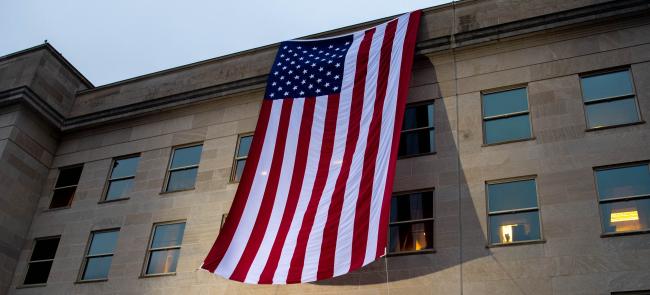
The director of the Army National Guard says the force will look to convert, transition or stand up new units as the Army strives to modernize amid continuing global requirements.
Lt. Gen. Jon A. Jensen spoke on the future of the Army Guard during an event hosted by the Center for a New American Security in Washington, D.C., last week.
Army leaders have repeatedly said the reserve components will modernize alongside the active force, not after.
But Jensen said the Guard is more than included in modernization efforts, it is a key enabler of them.
He spoke of the Guard’s transition back to a division-centric force, which also required the force to look at what enabling units were no longer found in the Guard force structure.
One example was division Artillery units, which went away when the Guard focused on a brigade-led fighting force in the 2000s.
Jensen said that as the Guard realigns under divisions, officials have begun to stand up division artillery commands as a “return to the past.”
At the same time, the force is also adding more modern units, such as information and electronic warfare battalions, to ensure those divisions can fight on modern battlefields.
The force is also updating formations. Jensen said the Army Guard has identified artillery formations that will soon begin to field new extended range cannons.
Jensen said updating the force was an ever-evolving effort, particularly as the force remains the nation’s key combat reserve.
“What are our historic and current missions and what needs to be converted that we can convert and what do we need to stand up as new?” Jensen said.
Jensen’s remarks came as demand for the Guard has begun to decline, at least domestically.
As of Feb. 22, there were 41,600 Army Guard soldiers supporting global operations, including 19,400 in domestic Title 32 missions and about 22,200 supporting Title 10 missions both at home and abroad.
After two years of COVID-19 related missions, Jensen said the number of Guard soldiers deployed in support of those missions has been on a downtick.
The number of Guard soldiers engaged in those missions peaked at almost 40,000 in the summer of 2020 and rose again starting in December of 2021, reaching about 16,000 in the early weeks of the year.
“Now we’re starting to see that number going down,” Jensen said.
COVID-19 has now impacted three training years, the Army Guard director said. And while he saw no future change for overseas operational tempo, he did express confidence that domestic requirements caused by the virus would continue to wane.
“At some point we’re going to leave a COVID-19 environment,” Jensen said. “If you took that off our plate right now, that would reduce our op tempo by a factor of about 15,000 soldiers a month.”
“We’re in a once-in-a-century time period here,” he added. “This does not happen often.”
Other areas of potential growth include the multi-domain task forces being developed for future fights. Jensen said he believes there’s a role for the Army Guard inside of those organizations. And he said the force provides a unique set of cyber skillsets not available in the active force.
The ability to provide those capabilities is even more important amid continued budget uncertainty.
“We’re here to solve problems for the Army,” Jensen said, noting the Guard provides 39% of the operational Army force while only accounting for about 10% of the budget.
Budget tensions will require the military to balance its key priorities of modernization, people and readiness. And the Army Guard could benefit.
The Army’s new readiness model is focused on meeting global requirements while simultaneously meeting modernization goals. But Jensen said the active component was too small to do that by themselves.
He said that as the active force modernizes, the Army Guard stands as a cheaper option to fill overseas requirements. And if the active force must sacrifice end strength, those capabilities can be moved to the Guard.
“We’re going to work with the Army and we’re going to fill that gap where they need us to fill that gap,” he said.











